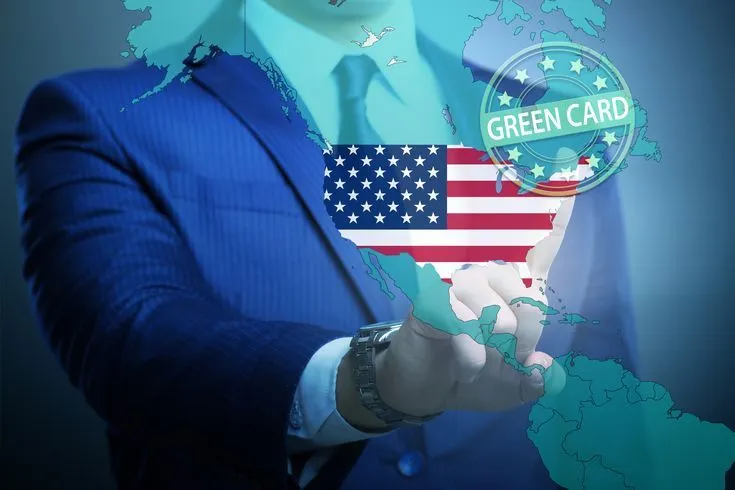Here’s how to use social media for U.S. immigration

Why Social Media Matters for Immigration
Most people can’t go without checking their social media for even an hour. This shows how closely our online activity is linked to real life. That’s why social media has become a new, informal tool for building a strong immigration strategy. Immigration officers and lawyers are increasingly looking at applicants’ digital footprints.
If your case, for example, is for an O-1 visa or an EB-2 NIW green card, where you need to prove exceptional abilities or national interest, a strong social media profile can support your professional importance. This is especially useful when your accomplishments, like publications, awards, or project involvement, might not be easily verified through documents without context. However, if your social media activity clearly reflects your journey, it makes the job easier for the experts reviewing your case.
Here are some key takeaways:
- Social media is an unofficial, but noticeable, factor to immigration services.
- Your online presence can either strengthen or weaken your immigration strategy.
- Well-managed social media for immigration is a way to “speak” to an officer, even when you’re not there.
Your Social Media Image as Part of Your Professional Profile
Immigration cases always rely on evidence. However, in today’s world, this goes beyond just diplomas and recommendation letters. This is particularly true for professionals in public fields like science, culture, sports, IT, and education. If you share expert posts, join discussions, and showcase your projects, you build an image of an active, recognized professional. This is especially crucial for visa categories that require you to be “visible”.
Things to focus on:
- Profile picture and cover photo: These should visually match your professional image.
- Description and bio: Briefly and clearly state who you are, what you do, and your achievements.
- Content: Regularly post things that show your experience and contributions to your industry.
- Links: Include mentions in the media, scientific publications, or projects, if you have any.
These aren’t just “extras” ; they’re part of the evidence system you’re building. Ultimately, social media becomes an essential part of your application, especially in the eyes of an immigration lawyer or a USCIS officer.
Social Media for Immigration: What USCIS Considers
U.S. Citizenship and Immigration Services (USCIS) doesn’t officially list social media as required evidence for visa applications. However, for certain categories, it can act as extra material to strengthen your case. This is particularly true for visas where you need to prove personal achievements, expertise, or public significance.
Visa categories most affected by your online presence:
- O-1 (visa for individuals with extraordinary ability): Social media can support public recognition, conference participation, interviews, and publications.
- EB-1A and EB-2 NIW (green cards for extraordinary ability and national interest waiver): Your social media profile helps illustrate your impact in your field and public recognition.
- P and Q visas (visas for artists, athletes, and cultural exchanges): Digital activity can be important for confirming your popularity.
For these categories, social media for immigration isn’t a replacement for official documents, but a strong addition. This is especially true in complex cases where evidence is insufficient or unclear.
Why “Blogger” and “Social Media” Aren’t in the Law, but Still Matter
You won’t find terms like “blogger,” “influencer,” “Instagram,” or “YouTube” in U.S. immigration law. This isn’t an accident. The law remains traditional, based on classic forms of evidence like diplomas, publications, awards, and recommendation letters. However, real-world practices have advanced, and USCIS experts understand this well.
In practice:
- Your social media profile can show that you truly do what you claimed in your case.
- Followers, reach, and engagement indicate your influence, especially if you target a specific audience.
- Interviews, mentions, and podcast appearances all relate to the “recognition in the field” criterion.
So, the lack of direct mention doesn’t take away from the actual importance of social media. It becomes an informal language you “speak” to an immigration officer.
How to Tell the Difference Between a Personal Blog and a Professional Image
One common mistake applicants make is mixing personal and professional content. When vacation photos, memes, and random posts are mixed with professional achievements in one profile, it creates a unclear image. However, an immigration strategy, especially in categories requiring visibility and recognition, needs clear positioning.
Your Instagram, LinkedIn, or YouTube should serve a specific purpose: to be an archive of your personal life, or to represent you as a specialist. Combining these isn’t just ineffective, but also potentially risky for your immigration case. If you want to use social media for immigration wisely, start by checking yourself. Ask yourself: Does my profile show my expertise? Is it clear what I do? Is it clear what contribution I make to my profession, industry, or community? If you can’t confidently answer “yes” to even one of these questions, your profile needs work.
Here are the main differences of a professional image:
- A visually well-designed profile (avatar, cover, consistent style).
- A biography listing your profession and achievements.
- Posts focusing on your work, projects, and event participation.
- Reviews, tags, and mentions that build a picture of recognition.
Even one well-designed and active account can boost your immigration case. The main thing is for it to be consistent, continuous, and to reflect what you state in your USCIS documents.
Auditing Your Instagram, YouTube, and TikTok Profiles: Where to Start

If you plan to use social media for immigration, the first step is to audit your content. Your profile shouldn’t just “exist”—it should work for you and show who you are as a professional. Content tells the story of your expertise. Even if you’re a talented designer, but your Instagram only has photos of food and cats, it won’t prove your skills to an immigration officer. However, posts with case studies, client testimonials, event participation, and behind-the-scenes glimpses of your work send a strong message.
What’s important:
- Visuals: Well-designed posts, neat previews, consistent style.
- Post descriptions: Concise, to the point, emphasizing professional value.
- Regularity: You don’t need to post daily, but no activity for years looks strange.
Even short videos on TikTok or Reels can be helpful if they reveal your specialization, teach, or demonstrate skills.
Mistakes That Harm Your Case
Sometimes, having nothing is better than a profile that hinders your case. Social media is an opportunity, but also a risk. There are several mistakes that immediately lower your chances of a positive decision on your case.
Common mistakes:
- Contradictory information: If your application states one thing, but your Instagram calls you something else, it raises questions.
- Inappropriate content: Memes, provocative posts, aggressive comments, topics related to violence or illegal activities.
- Mixing personal and professional: When club photos and conference diplomas are mixed in one profile.
- No mention of your profession: The profile “exists,” but no post says what you do.
Consistency is crucial for USCIS. If you apply as a scientist, but your YouTube mostly features video games unrelated to science, it weakens your strategy.
What to Do if Your Followers Aren’t Relevant
Not everyone has 100,000 followers in a professional niche. That’s okay. The main thing is not to chase numbers, but to work with what you have. The number of followers isn’t key if their behavior and your content show professional value.
If your audience consists of random people or old friends, and you now want to make your profile professional, you can:
- Clean up your profile: Hide or delete posts unrelated to your profession.
- Start posting professional content: Case studies, tips, reviews, opinions.
- Mention your work in every other post: But do it naturally.
- Add links to external evidence: Portfolio, articles, publications.
Over time, your social media will “restructure,” and even an irrelevant audience will become part of your case as a sign of activity and media reach. Remember: social media for immigration doesn’t demand perfection. It requires consistency, clarity, a professional image, and clear positioning.
Followers and Connections: Who Follows You Matters

In an immigration strategy, it’s not just what you say about yourself that’s important, but also who listens to you. For USCIS, this can be an indirect but convincing sign that:
- You’re noticed in your professional community.
- Your work is interesting and in demand.
- You influence other specialists in your field.
Social media for immigration becomes stronger when your LinkedIn profile is followed by, for example, a Stanford professor, your Instagram by a major industry publication editor, or your YouTube by a scientific center’s channel. It’s especially valuable if these followers are engaged: commenting, liking, and sharing your materials. This isn’t just a digital footprint; it’s proof of professional connections.
Case Examples from Practice
In the practice of immigration lawyers, there are cases where social media helped bring a case to the required level. Here are a few examples:
- An architect from Eastern Europe lacked formal publications but had an active Instagram with tens of thousands of followers, including architectural firms, industry media, and famous designers. His case was strengthened by screenshots of these subscriptions and engagement.
- A medical blogger who applied for an EB-2 NIW made short science-popular videos on TikTok. His videos were actively commented on by doctors, researchers, and even university representatives. These comments were recorded and added as proof of recognition in the field.
- An illustrator whose works were liked and shared by publishers and art directors. Screenshots of these reactions became part of the evidence for an O-1 visa case.
Such examples show that social media for immigration isn’t just an option, but a real tool to confirm professional influence, especially in unusual cases.
How to Record Valuable Comments
Comments, mentions, and reactions on social media are unstable. They might be there today and deleted or from a closed account tomorrow. Here’s how to do it correctly:
- Screenshots: This is the main and most universal method. Save them with the date, commenter’s name, and a link to the profile.
- Data export: Some social networks (like Instagram and Facebook) allow you to download an archive of your activity, including comments.
- Quotes in written statements: If a known person left a valuable comment, you can include it in a personal letter or recommendation letter, citing the source.
- PDF documents: Organize a collection of screenshots with explanatory text and add it to your document package as an appendix.
Important: Don’t fake comments. USCIS can check the data, especially if it seems too perfect. A little honesty is always better; it always works in your favor.
Podcast Participation, Interviews, and Media: Digital Media Presence
In an immigration case, you often need to show that you’re not just a good specialist, but a notable figure in your professional field. Previously, such evidence only meant publications in scientific journals or interviews in print media. Today, the concept of media has expanded significantly.
Digital media presence includes:
- Participating in podcasts on professional topics.
- Interviews on YouTube channels or Instagram Live.
- Publications in online media, industry blogs, and Telegram channels.
- Mentions in news, event announcements, digests, and even stories.
Social media for immigration allows you to capture and show these examples of your public activity. For O-1 or EB-1A visa categories, this relates to the “materials about you in prominent media” criterion, and in EB-2 NIW, it can be used as proof of your influence and contribution to your field. Not only participation is important, but also the quality and reach of the publication. If you were invited for an interview by bloggers who have a professional audience, that’s already a strong argument. Especially if it was about your expert topic and you commented on it as a specialist.
How to Use Invitations and Mentions
Invitations to podcasts, interviews, or conference participation are not just a source of pride, but also documented proof of your activity. To use this effectively in your immigration strategy, follow these steps:
- Document participation: Take screenshots of broadcasts, collect links, record the date and topic of the episode. It’s best to organize this as a document or PDF file.
- Save invitations: If you have letters, messages, or email invitations, don’t delete them. You can add them to your document package as proof of media interest in you.
- Show activity: After participating, post about it on social media, tag organizers, and add hashtags. This creates a digital footprint and strengthens your online reputation.
- Collect feedback: If comments, mentions, or shares appear after an interview, record them. All of this adds to your image.
It’s also important that your social media accounts are linked to these activities: include links to interviews in your profile description, create pinned posts, add Highlights to Instagram, or playlists on YouTube. This way, social media for immigration becomes not just a showcase, but a storage of your evidence. And the more complete and organized this showcase is, the stronger your application will be.
Monetization and Commercial Success as Proof of Status

Many believe that social media is just a way to express oneself. But for immigration purposes, it’s important to understand: monetization is direct proof of your value in the market. If you earn money through Instagram, TikTok, or YouTube, you are effectively confirming that you are a sought-after specialist whose audience listens to them.
Social media for immigration becomes especially important if your content brings in a steady income. This means that:
- You’ve created a product or service that people are willing to pay for (directly or indirectly).
- You have business skills.
- Your work is interesting to a broad audience or a specific professional niche.
Important: You don’t need to earn millions. Even a modest, but steady and documented income strengthens your immigration case, especially in EB-2 NIW or O-1 categories, where the public or economic significance of your activity is important.
How to Properly Declare Income and Avoid Problems with USCIS
Any income related to social media monetization must be:
- Transparent: You can show its sources.
- Confirmed: You have documents, statements, invoices.
- Declared: Especially if you are in the U.S. or applying for a status that requires financial reporting.
To avoid problems:
- Keep reports: From YouTube Studio, TikTok Creator Fund, Instagram bonuses, etc..
- Document transfers: PayPal, Stripe, bank transactions—anything that confirms income.
- Use contracts: Even if it’s a one-sided agreement or an email offer, save it.
- Mention income in your case: State that part of your professional recognition comes from monetization and add supporting evidence.
Don’t hide income hoping to “stay unnoticed”. USCIS doesn’t forbid earning money on social media—in fact, it can be a key argument in favor of your professional weight.
Brand Collaborations and Ambassadorships
Collaborating with well-known brands is not just a source of income, but an important indicator of public recognition and trust in you as a specialist. When a company chooses you to represent its product, it speaks to your professional status, influence, and established reputation. Regardless of the format—whether it’s ambassadorship, advertising, or participation in a promotional campaign—such interactions demonstrate demand in the market, confirm business trust, and highlight your ability to work with an audience.
For USCIS, such partnerships are additional arguments in your favor. They show that you have expertise that is interesting not only to individual followers but also to commercial entities. To include this experience in your immigration case, you should gather visual and documentary evidence in advance: materials with placed advertisements, business correspondence with brands, reach or engagement statistics, and brief explanations of why you were chosen. All these elements turn your social media profile into complete proof of your professional value.
New USCIS Requirements for Social Media
Since 2020, USCIS has officially required applicants for visas, green cards, or citizenship to list all their social media accounts from the past 5 years. This applies to forms DS-160, DS-260, and some other applications, including I-485 and I-589. In other words, the government now systematically tracks every applicant’s digital footprint.
When filling out the application, you’ll be asked to provide:
- The platform (Instagram, YouTube, TikTok, Facebook, Twitter/X, LinkedIn, etc.).
- The username (without a password).
- The period of use.
It’s important to understand that even if you used an account under a nickname or for professional purposes, you are still required to list it. Even if it doesn’t contain your real name. USCIS analyzes not only identity but also how the content of your profile matches the information you stated. At this stage, social media for immigration becomes an official part of your application, so any inconsistencies can affect the outcome of your case.
Risks of Incorrect Information
Providing incomplete or incorrect information about social media accounts is considered a misrepresentation. This can lead to:
- Visa denial.
- Cancellation of an already approved status.
- In serious cases, a ban on re-entry to the U.S..
Common mistakes:
- Intentionally hiding an account.
- Providing incomplete or outdated information.
- Lack of activity that contradicts what you stated in your case.
For example, if you apply as a medical expert, but your primary TikTok content is dancing and pranks with no hint of your profession, it can raise doubts about the truthfulness of your statements.
To avoid risk:
- Audit all your accounts before applying.
- Delete contradictory or inappropriate content.
- Design your profiles to strengthen your immigration image.
Image Check Through Social Platforms
Your social media image has long become a full-fledged digital reputation. U.S. immigration services, including USCIS and consulates, analyze not only what you state in applications but also information available about you in public sources. Special attention is paid to how well your stated information—position, field of activity, country of residence—matches the content of your profiles. Public statements are also carefully monitored: political expressions, calls for violence or discrimination can work against you. It’s equally important that content doesn’t undermine your immigration strategy—for example, photos showing behavior inconsistent with your stated professional image can raise doubts about the applicant’s sincerity.
If you intend to use social media for immigration, you should proactively create a clean, professional, and purposeful digital image. Preparation includes a detailed review of published content for at least the last two years. You must delete or restrict access to materials that could be misinterpreted. It’s also important to update your profile description, links, and other public information to reflect your professional journey. Your social platforms should become a place where you show your expertise and value as a specialist, not just a means for personal communication. In today’s reality, social media for immigration is no longer a minor factor—it has become a full part of your immigration story.
Plan Your Digital Image in Advance – It’s Part of Your Immigration Strategy
Immigration to the U.S. isn’t just about documents and official papers, but a complete strategy for presenting yourself as an individual and a specialist. In this context, social media for immigration becomes a key element that can either strengthen or weaken your case. If your digital image supports your stated profession, shows expertise, and demonstrates public recognition, it becomes an additional argument in favor of your application. Conversely, random posts, inappropriate content, or contradictions between your application and social media profile can raise doubts for an officer.
Your digital image must be built in advance, consciously, and systematically. Consistency, transparency, and a focus on professional information presentation build trust in you as an applicant. Let your profiles speak about you the way you want to be seen—confidently, honestly, and convincingly.
Need advice on visa issues? Discuss them with an immigration lawyer
Leave a request and we will contact you shortly

FAQ – TOP Frequently Asked Questions

How the US Green Card Lottery Works: A Step-by-Step Plan for Participants and Winners

How Much Does It Cost to Move to the USA? A Detailed Guide for Immigrants


